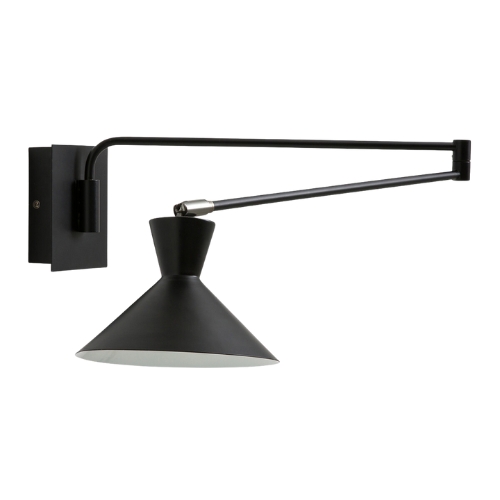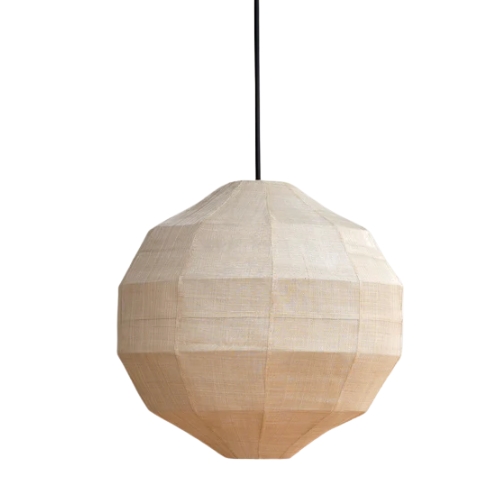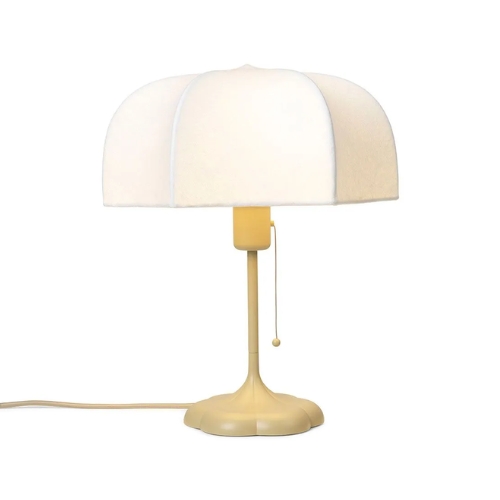4 Important Lighting Rules to Learn Before You Change Fixtures in Any Room of Your House
From the prep and planning stage to styling your lighting expertly in your home, I've asked the experts for their best tips and tricks
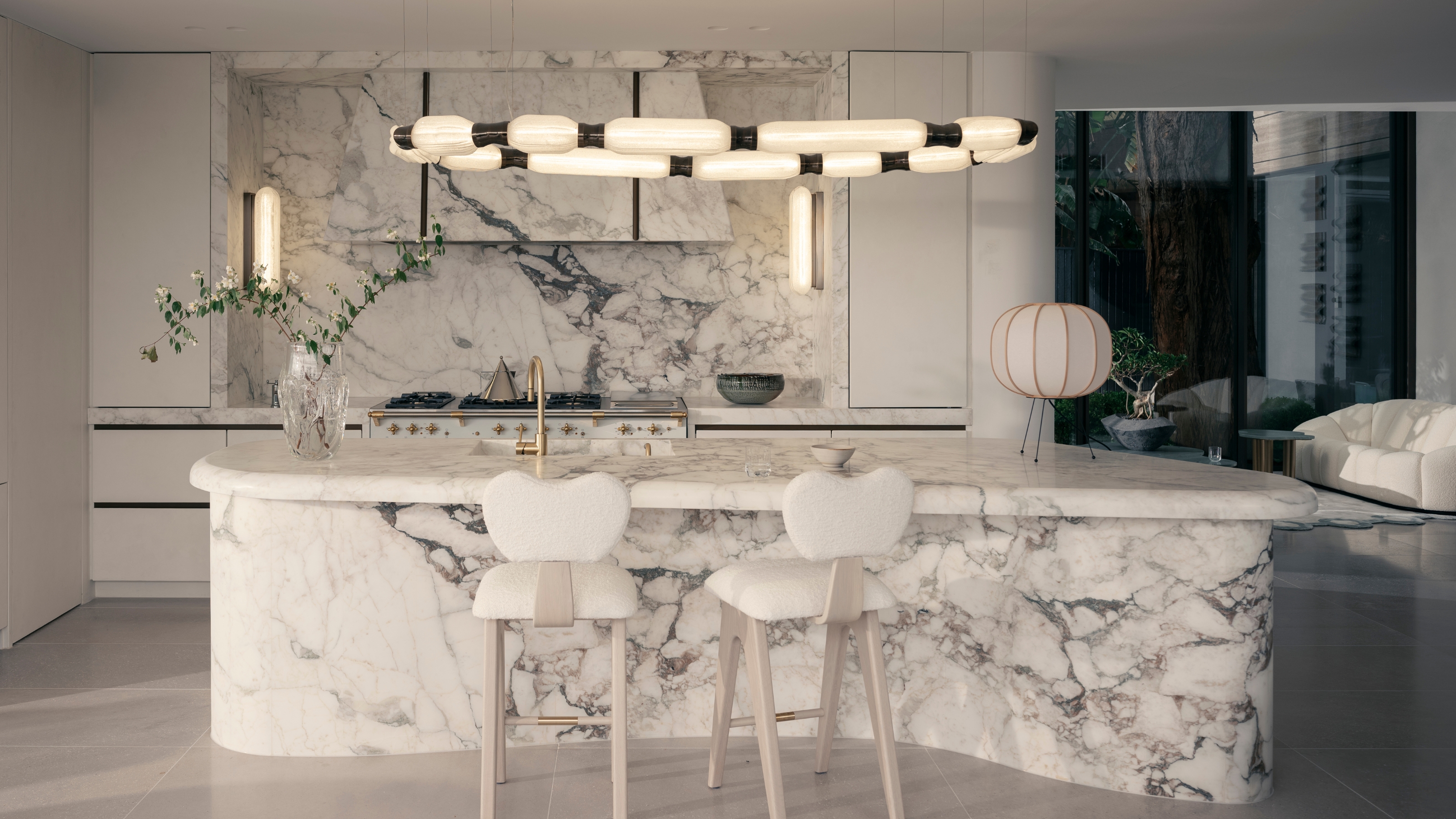

Whether it was a table lamp that was too small or a sconce light that didn't quite have the effect you were hoping for, we've all made a mistake or two when trying to add a little mood lighting to our homes. It's because good lighting should enhance how a space is used, not just how it looks, and knowing the proper lighting rules will streamline the process.
Your decision probably shouldn't be led by following lighting trends, as designers explain. Designer Russell Pinch, the co-founder of UK-based furniture and lighting company PINCH, says, "The first step is to consider the function of the light in the space and the flow of the room. For pendants and wall lights, we look at three main characteristics: height, spacing, and scale."
In order to avoid any big mistakes, it's essential to first consider the specific space in mind. "Positioning should feel intentional and balanced, instead of being aimless or obstructed," says Russell. Don't let the lighting rules below intimidate you; instead, let them guide you to your perfect ambience.
1. Measure Before You Hang
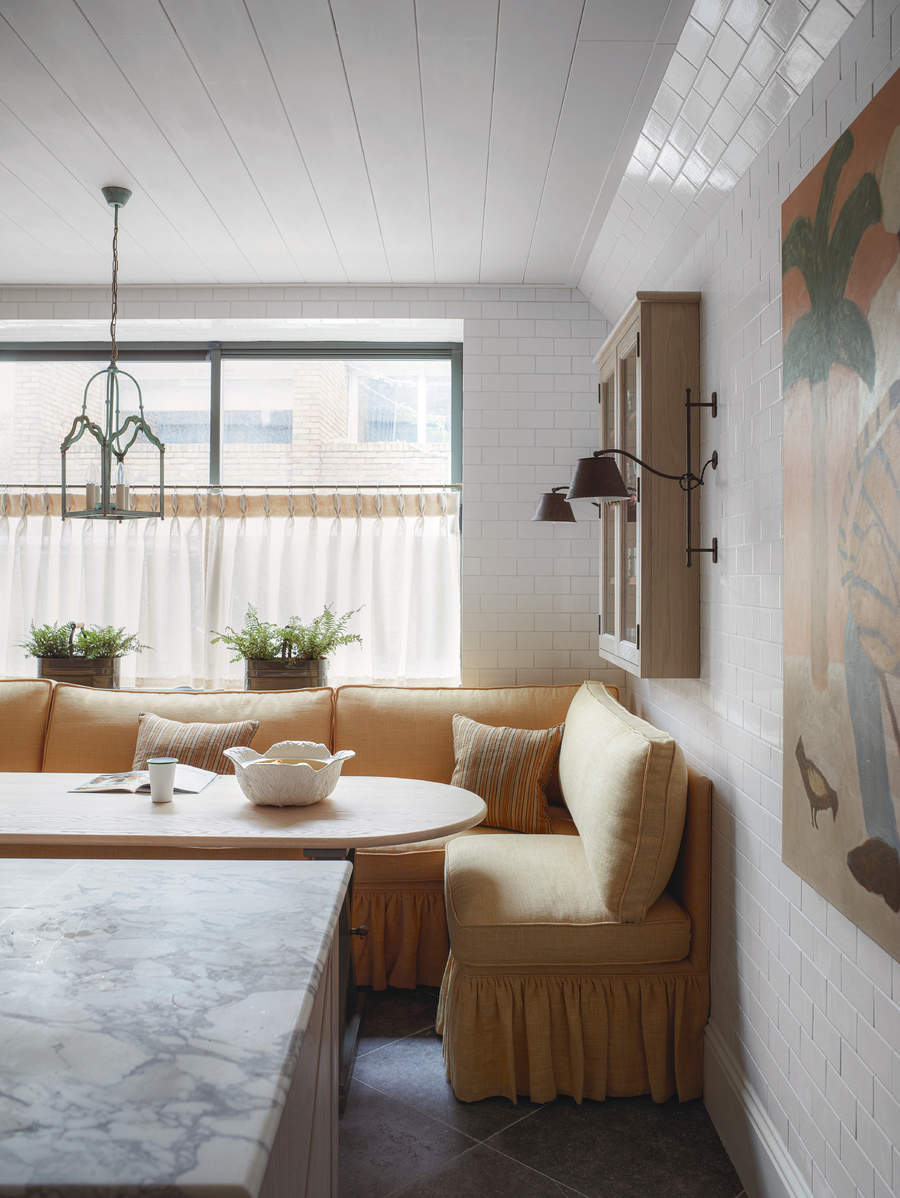
Lighting in communal areas needs to be especially well measured in order to properly enjoy the space.
As an impulse buyer, I know the feeling of obsessing over how a piece looks online, without really thinking about how it will actually fit in my space. However, every expert I spoke to reiterated the importance of proper planning and prep before you purchase.
It may be obvious, but different lighting fixtures impact spaces differently. So, in order to ensure your piece is installed and integrated well, measuring is essential.
As a general rule of thumb, Russell Pinch says, "Sconces and wall lights should be hung at eye-level or five to six feet from the floor." When it comes to the height of a light over a dining table, "Pendants and chandeliers should hang somewhere in the range of 28-36 inches above the dining table or kitchen island, to the bottom of the fixture," he adds.
Getting these measurements right could be the difference between your guests being able to see and enjoy their meals and feeling like they're in an interrogation at your dining table.
The Livingetc newsletters are your inside source for what’s shaping interiors now - and what’s next. Discover trend forecasts, smart style ideas, and curated shopping inspiration that brings design to life. Subscribe today and stay ahead of the curve.

In 2004 Russell Pinch and Oona Bannon established PINCH with the aim to create furniture and lighting that homeowners would want to live with. PINCH partners with a select number of leading international retailers, and PINCH has been nominated for, and won, many design awards over the years. PINCH products are characterised by a quiet and elegant aesthetic, the result of tireless refinement and an intense dedication to craft and process.
Another tip when it comes to lighting rules is to add additional space on the side of your island or table to make sure the fixtures don’t obstruct opening doors, cabinets, or bump into heads.
"You’ll also want to take into consideration personal preferences (is anyone in your family tall, etc.), do you keep high arrangements on the table, and other architectural elements like the ceiling that the light is complementing," says Vittorio Asaro, designer at lighting studio, Gaspare Asaro.
And lastly, always consider the intent of the design of the light as you measure. "Some fixtures don’t look their best at a certain height as they are meant to be viewed from a specified height and may not look good when close to eye level," adds Vittorio.
Founded in 2010, Gaspare Asaro is a multifaceted design studio focused on crafting one-of-a-kind lighting and furniture. The studio is led by son and father duo, Vittorio and Gaspare, with workshops in Milan and Florence led by masterful artisans and an expansive New York showroom.
2. Consider The Proportions
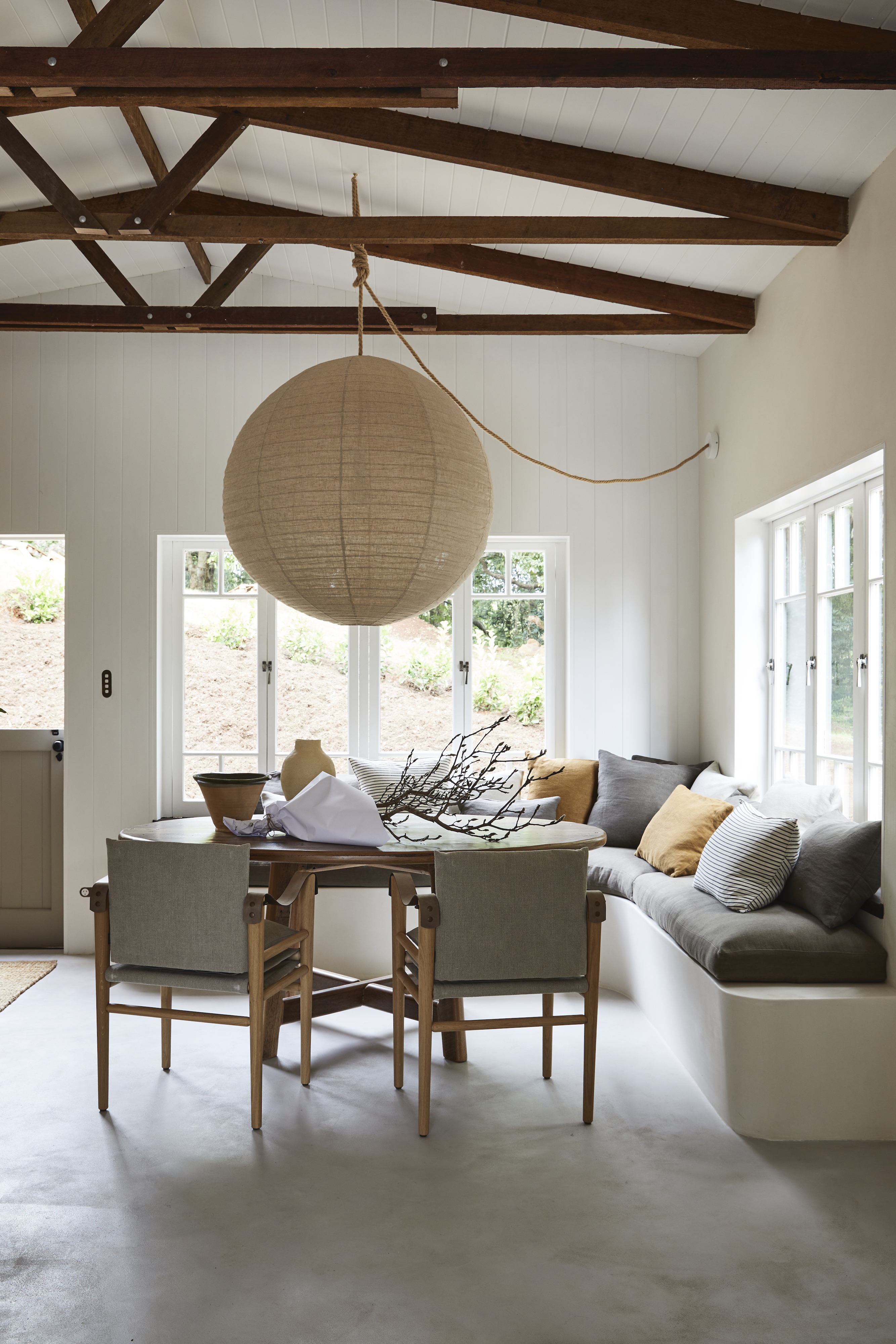
An oversized pendant light is a fabulous way to make a statement in an otherwise minimalist space.
Good lighting is all about perfecting proportions. A larger room will command a larger piece, and a smaller area, such as a hallway, will require a smaller fixture. It all comes down to proportionality within the space, as well as personal preference.
"Entryway lighting ideas or narrow spaces are most suited to compact fixtures or slim wall sconces," explains Ruseell. "For larger, open-plan rooms, you can go bold with generous, statement designs or layered lighting to create visual impact."
On the other hand, areas of a room that you cannot walk through (such as above tables or for kitchen island lighting), pendant lights will be your best bet. "We like to be dramatic with scale, and many of our lights are slightly oversized, which we think works well with simpler furniture lines and ratios," says Russell.
A single large pendant, for instance, adds just the right amount of drama, while a row of multiple smaller pendants can create a nice flow. Russell adds, "Always keep it odd — three or five being great numbers."
When choosing lighting based on proportions, nothing beats visualization and instinct. "I tell my clients who are struggling with the proportions of the space to cut a cardboard piece the same size as the fixture," explains Vittorio. "This is a trick that works every time and immediately lets you see if the proportions are right and balanced for the room, and to feel it in the space."
3. Practice Layering Your Lighting
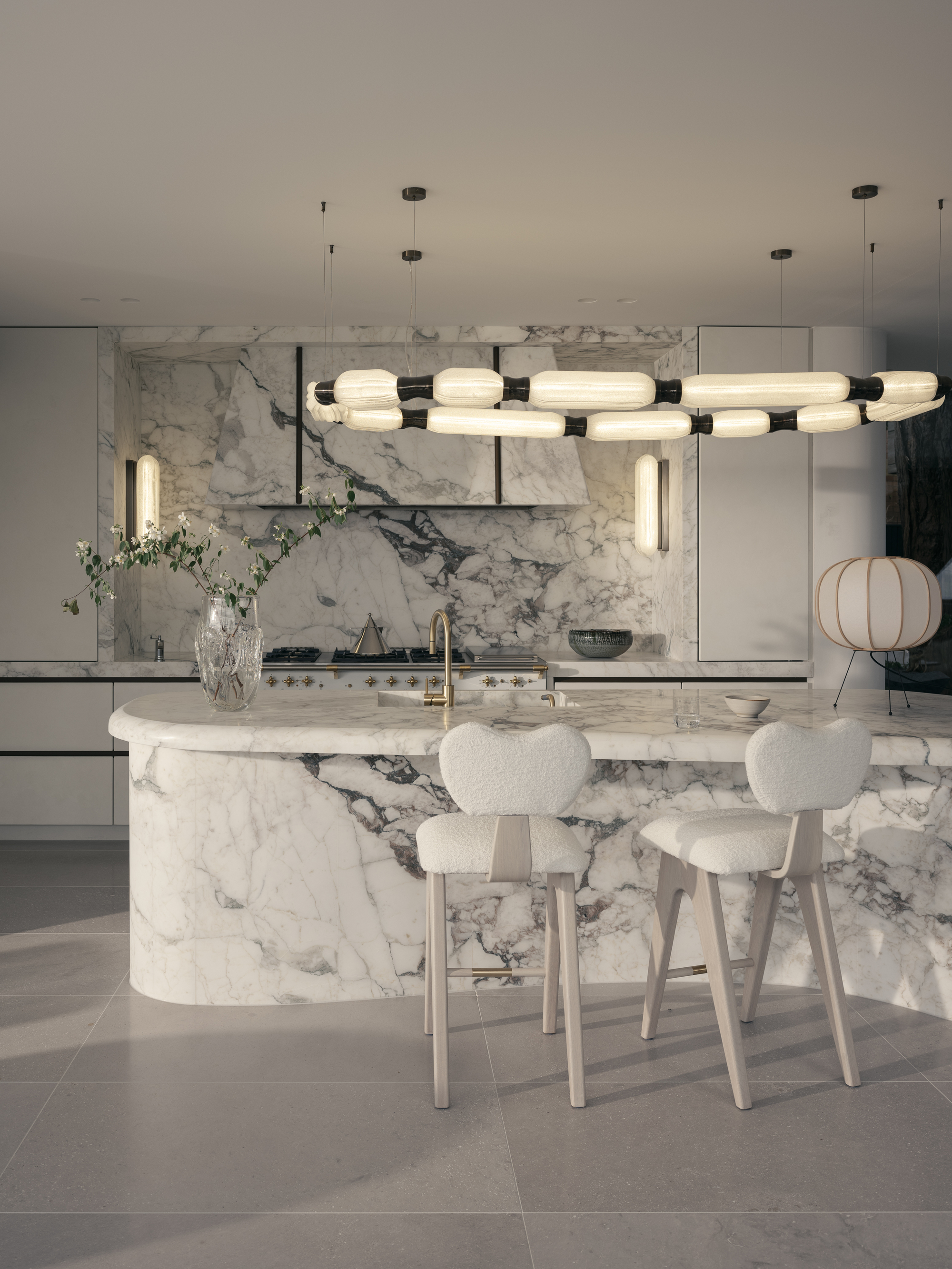
This kitchen expertly layers sconce lighting, pendant lighting, and a table lamp for a dynamic lighting-scape.
No lighting rule will up the drama quite like mastering the art of getting the layering right. Imagine silk pendant lights floating overhead, with wall scones complementing them, and table lamps sitting below. Layering lighting gives you the ability to change the mood as and when desired.
When layering different styles, consider the ambience and visual impact, the functionality of how it's being used, and whether it's intended to highlight an accent, such as a piece of art or object.
"In our own lighting collection, we’ve designed lights that live beautifully together, but look equally as elegant solo, as a standalone sculptural piece," says Russell. This is a good way to ensure you are buying pieces that prioritize form as well as function.
As for how many lights is the appropriate amount, Vittorio says, "The generally accepted industry rule is five to eight sources per room. However, don’t be afraid to add more or less, you’re the one living here!"
Consider the purpose of the room. For example, a kitchen needs a lot of light for safety and productivity. In open spaces, combining different lighting types can add a good amount of dimension and depth, as long as there is enough breathing room for each light to really shine. (Pardon the pun.)
But don’t rely solely on ambient lighting. "You may need recessed lighting or track lights for safety and more illumination to light up your entire space," adds Russell.
4. Consider Lighting Controls

The low, warm light from these scones complements the darker, serene aesthetic of the hallway.
You can get so caught up in planning your home lighting scheme that you end up forgetting the most important part: the lighting itself, which takes equal amounts of preparation.
"If you are lucky enough to be building a space from the ground up, it's always lovely to be able to link the lights on a circuit and separately switch on your lamps and overheads," says Russell. "Opening the door and stepping into gentle, atmospheric light creates a very warm welcome home."
A few things to consider that are often overlooked include practical elements like dimmers and the color and brightness of the bulb. Both of these elements contribute to the overall mood of the space and matter just as much as the fixture.
"Also, lighting can be used to define areas of a room and create zones for different functions without the need for walls," says Russell.
When it comes to the biggest lighting rules, Vittorio says, "Never leave lighting as an afterthought in the design of the room — it is an integral part of the space and should be worked into the design in that way."

Olivia Wolfe is a Design Writer at Livingetc. She recently graduated from University of the Arts London, London College of Communication with a Masters Degree in Arts and Lifestyle Journalism. In her previous experience, she has worked with multiple multimedia publications in both London and the United States covering a range of culture-related topics, with an expertise in art and design. At the weekends she can be found working on her oil paintings, reading, or antique shopping at one of London's many vintage markets.
